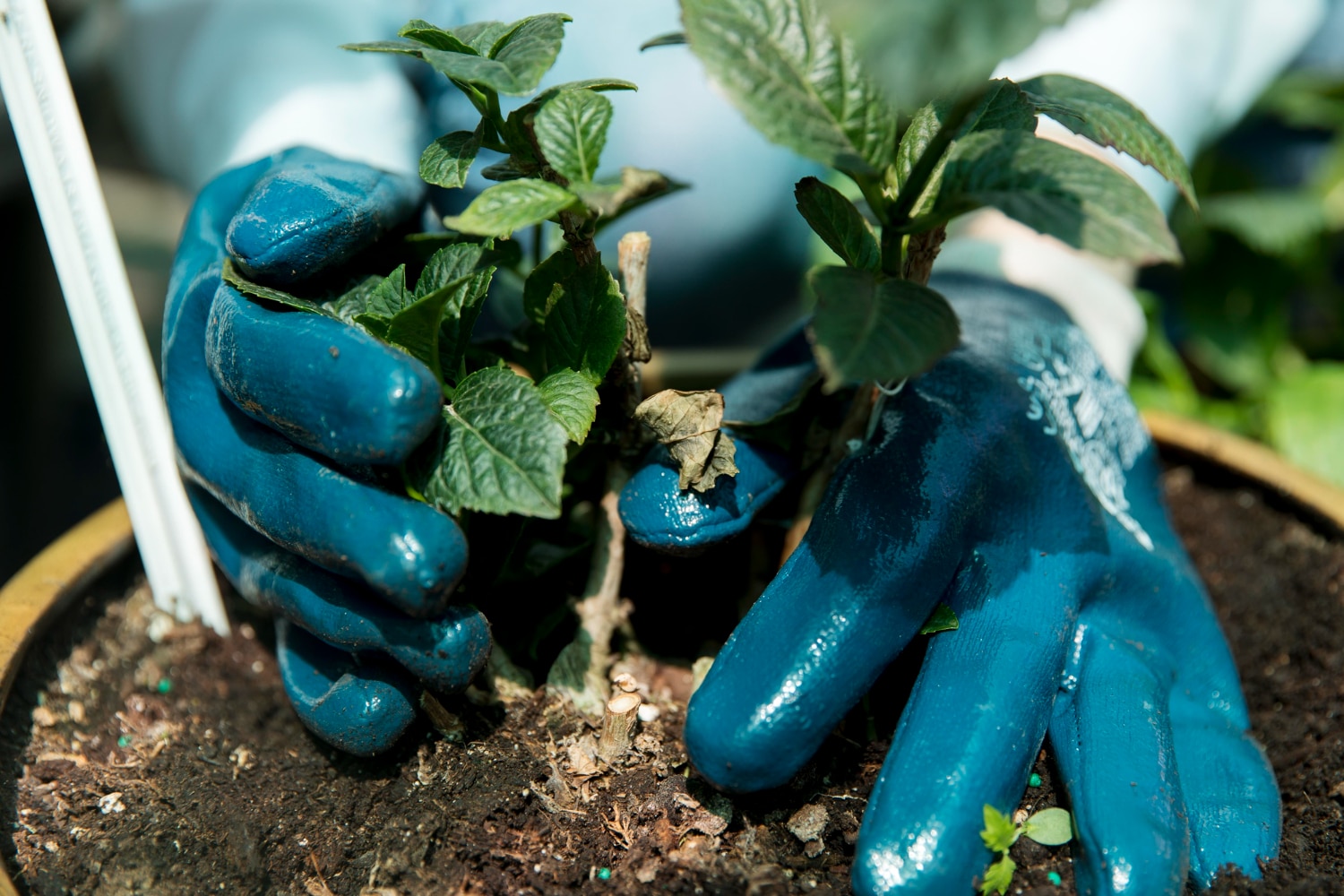Taking care of Texas soil needs a special approach because our state has many different soil types. From sandy areas near the coast to clay-heavy spots inland, each region faces its unique challenges.
We recommend testing your soil first to learn about its pH levels and what nutrients it needs. This simple step helps you pick the right treatments and avoid wasting money on products that won’t help your specific soil type.
A good Texas soil care plan includes adding organic matter twice yearly and watching soil height near walkways and foundations. You need to keep your soil healthy since it affects everything that grows in your yard – from grass to garden plants.
Understanding Texas Soil Types
Texas yards contain distinct soil types that affect how well grass and plants grow. Each type needs specific care to create healthy lawns and gardens.
Characteristics of Sandy and Clay Soil
Sandy soil feels gritty and drains water quickly. Plants often struggle to get enough water and nutrients in sandy soil because both wash away fast. These soils need frequent watering and regular fertilizer applications.
Clay soil feels sticky when wet and hard when dry. It holds water and nutrients well but can become compacted easily. Plants may have trouble growing deep roots in clay soil, and poor drainage can lead to waterlogged areas.
We recommend testing your soil’s drainage by digging a 12-inch hole and filling it with water. Sandy soil drains in 1-2 hours, while clay soil takes 8+ hours to drain.
Assessing Soil Composition
A simple jar test helps identify your soil type. Fill a jar 1/3 full with soil, add water, shake well, and let it settle for 24 hours. The layers will then separate naturally:
- Any sand sinks to the bottom
- Silt forms a middle layer
- Clay stays on top
- Organic matter floats
Professional soil tests give more detailed information, helping you choose the right fertilizers and soil treatments for optimal plant growth. Key details include:
- pH levels
- Nutrient content
- Organic matter
- Recommendations for amendments
Essential Lawn Maintenance Practices
Regular lawn care practices keep Texas grass healthy and strong. The right maintenance helps grass develop deep roots and resist common problems like weeds and drought stress.
Proper Mowing Techniques
Mow Texas lawns at 2.5-3.5 inches in height to promote deeper root growth, and never cut more than 1/3 of the grass blade length in a single mowing session. Sharp mower blades make clean cuts that help grass heal quickly. Dull blades tear grass and create brown, ragged edges.
Best Mowing Practices:
- Mow when the grass is dry
- Change mowing patterns each time
- Leave grass clippings on the lawn as a natural fertilizer
- Keep mower blades sharpened monthly
Irrigation and Water Management
Texas lawns need 1-1.5 inches of water per week during the growing season. Water deeply but less often to encourage deep root growth. The best time to water is early morning between 4-10 AM, as this reduces water loss from evaporation and prevents fungal growth.
Smart Watering Tips:
- Check soil moisture before watering
- Install rain sensors on sprinkler systems
- Use drip irrigation for targeted watering
- Adjust watering schedule based on rainfall
Aeration for a Healthy Lawn
Core aeration breaks up compacted soil and lets air, water, and nutrients reach grass roots. We suggest aerating Texas lawns once per year in spring or fall. Clay soils benefit most from aeration, as the process removes small plugs of soil, creating channels for better water absorption. Sandy soils may need less frequent aeration, while heavy clay soils might need it twice yearly.
Key Benefits of Aeration:
- Reduces soil compaction
- Improves root development
- Decreases water runoff
- It helps break down thatch buildup
Nutrition and Fertilization Strategies
Texas soils need specific nutrients and proper fertilization to support healthy plant growth. A balanced approach combining essential nutrients, organic matter, and correct timing helps create fertile soil conditions.
The Role of Key Nutrients
Nitrogen, phosphorus, and potassium form the backbone of soil nutrition in Texas. These nutrients support different aspects of plant health.
Nitrogen promotes leaf growth and gives plants their green color. Most Texas soils need regular nitrogen additions through fertilizer. Phosphorus helps develop strong roots and promotes flowering. Clay soils often bind phosphorus, making it less available to plants.
Key Nutrient Requirements:
- Nitrogen: 1-2 pounds per 1,000 square feet annually
- Phosphorus: Based on soil test results
- Potassium: Helps with drought tolerance and disease resistance
Organic Matter and Soil Fertility
Adding organic matter improves soil structure and nutrient availability – compost and mulch are excellent sources. Mix 2-3 inches of compost into the top 6 inches of soil before planting. This practice helps sandy soils hold water better and loosens clay soils.
Regular mulch applications of 2-4 inches help:
- Keep soil temperatures stable
- Retain moisture
- Add nutrients slowly
- Prevent weed growth
Timely Fertilizer Application
Spring is the primary feeding time for Texas soils, applying fertilizer when soil temperatures reach 65°F. Split fertilizer applications work better than one large dose, so we suggest 3-4 applications spread throughout the growing season.
Application Schedule:
- Early spring: Complete fertilizer
- Late spring: Nitrogen boost
- Summer: Light feeding if needed
- Fall: Low-nitrogen blend
Follow package instructions for amounts and never fertilize during drought conditions, or when rain is expected within 24 hours.
Weed and Pest Control Techniques
A healthy Texas lawn needs proper weed control and pest management to thrive. Taking quick action against unwanted plants and insects helps protect grass and garden areas.
Preventing and Managing Lawn Weeds
Pre-emergent herbicides work best when applied in early spring before weeds start growing. Use these products in February or March to stop crabgrass and other invasive plants. For existing weeds, select herbicides based on your grass type. St. Augustine lawns need Atrazine-based products since they’re sensitive to common weed killers like 2,4-D.
Common Texas lawn weeds include:
- Crabgrass
- Dallisgrass
- Henbit
- Nutsedge
- Poa annua (annual bluegrass)
Pest Management for Garden Health
Regular inspection helps catch pest problems early. Look for signs of damage like chewed leaves or dead grass patches.
Common Texas lawn pests:
- Fire ants
- Grubs
- Chinch bugs
- Armyworms
- Fleas and ticks
Use targeted pest control products that match the specific problem. BioAdvanced Complete Insect Killer works well for multiple pests and keeps protecting for 3 months. Natural pest control methods include encouraging beneficial insects and maintaining proper drainage. Also, remove standing water to reduce mosquito breeding areas. Get in touch to discuss any aspect of your backyard or outdoor space to find workable solutions to any issues you may be struggling with.





